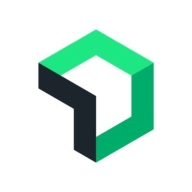

New Relic and Nagios Core are both monitoring solutions competing in the application and infrastructure monitoring category. New Relic seems to have the upper hand with its user-friendly interfaces and comprehensive application performance management capabilities, while Nagios Core is favored for its flexibility and cost-effectiveness.
Features: New Relic provides real-time analytics, custom dashboards, and error tracing, enhancing DevOps strategies and offering extensive application insights. It is known for its easy installation and operational friendliness for developers. Nagios Core offers a highly customizable open-source framework with numerous plugins and integrations, allowing extensive adaptability to various infrastructure needs, especially for technical users interested in bespoke configurations.
Room for Improvement: New Relic users have expressed concerns about data privacy, pricing transparency, and configurability within monitoring settings. There are additional criticisms regarding historical data retention and high costs. In contrast, Nagios Core faces challenges with its setup and configuration process, outdated interface, and limited scalability, which can require technical expertise to manage effectively.
Ease of Deployment and Customer Service: New Relic benefits from a SaaS model, facilitating ease of deployment in the public cloud, with generally highly rated customer service, albeit sometimes slow in problem resolution. Nagios Core primarily operates on-premises, depending heavily on a strong community support structure, which caters more to technically proficient users.
Pricing and ROI: New Relic's pricing matches its premium feature set, potentially expensive as usage scales, yet often justified by the value offered in performance enhancements and problem resolution. Nagios Core, as an open-source model, delivers excellent ROI through zero-cost licensing, appealing to organizations leveraging its extensibility without incurring substantial costs.
Issues that could be solved quickly sometimes take longer because they go around in circles.
I have reached out to customer support multiple times for various cases, particularly for customization such as creating dashboards, and my experience has been good.
The solution is scalable.
I tried many other solutions at work, however, in terms of Nagios, I haven't seen any disruption or downtime.
Using real-time data, if there are any malicious patterns or something happening, they can identify those.
Email alert customization is limited; it cannot be tailored much, which makes the system more rigid than optimal.
New Relic can get pricey for larger organizations.
You can monitor anything.
Using New Relic speeds up troubleshooting and resolution, giving us a clearer picture of where issues are, thus saving time and effort.
Your data is monitored end to end, which could be directly linked with the SLA and SLO.
Another aspect I appreciate is its good alerting mechanism, which can throw alerts and can be configured with PagerDuty or Slack, allowing easy checks on triggers and troubleshooting using New Relic.
| Product | Market Share (%) |
|---|---|
| New Relic | 1.8% |
| Nagios Core | 2.5% |
| Other | 95.7% |


| Company Size | Count |
|---|---|
| Small Business | 20 |
| Midsize Enterprise | 11 |
| Large Enterprise | 22 |
| Company Size | Count |
|---|---|
| Small Business | 65 |
| Midsize Enterprise | 50 |
| Large Enterprise | 61 |
This is IT infrastructure monitoring's industry-standard, open-source core. Free without professional support services.
New Relic offers real-time application monitoring and insight into performance bottlenecks. Its customizable dashboards and APM integration provide efficient operational support, while server performance alerts ensure quick issue detection.
New Relic provides comprehensive monitoring of application performance, tracking bottlenecks across databases and front-end components. Users employ it for server and infrastructure monitoring, as well as analyzing key metrics such as CPU and memory usage. The solution's ability to integrate with tools like PagerDuty enhances incident management capabilities. However, users have expressed a need for improvements in query language simplicity, more detailed historical insights, and better mobile app monitoring support.
What are New Relic's most important features?In industries like e-commerce and financial services, New Relic supports application performance monitoring to enhance user experience and system reliability. Organizations leverage its insights for optimizing performance, particularly in server operations and infrastructure management. Its ability to monitor API failures through synthetic monitoring is crucial for maintaining high service levels.
We monitor all Network Monitoring Software reviews to prevent fraudulent reviews and keep review quality high. We do not post reviews by company employees or direct competitors. We validate each review for authenticity via cross-reference with LinkedIn, and personal follow-up with the reviewer when necessary.